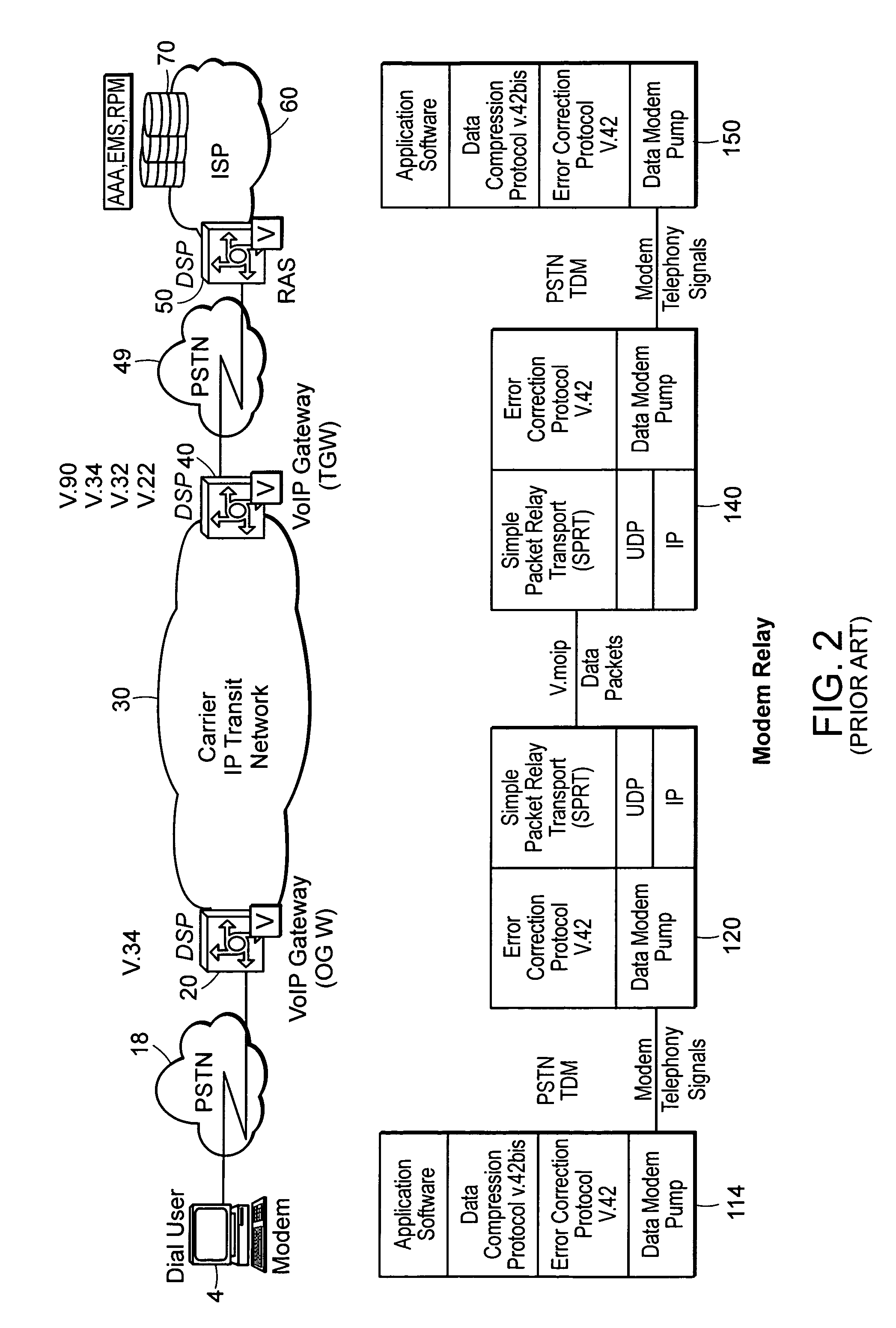Device to terminate a modem relay channel directly to an IP network
a modem relay and ip network technology, applied in data switching networks, instruments, digital transmission, etc., can solve the problem of not adopting a reliable modem signal over ip connections, and achieve the effect of eliminating a large part of the modem process
- Summary
- Abstract
- Description
- Claims
- Application Information
AI Technical Summary
Benefits of technology
Problems solved by technology
Method used
Image
Examples
Embodiment Construction
[0032]A description of a preferred embodiment of the invention follows.
[0033]FIG. 3 is a block diagram of a telecommunications network that implements modem relay in a Voice over Internet Protocol (VoIP) network. In such a network, a customer has a telephone that receives and places voice calls to and from another telephone 27. Voice signals are caused to travel over a Public Switched Telephone Network (PSTN) 18 through one or more local central offices (not shown). The central offices include switching equipment such as a Class 5 (C5) switch to aggregate such calls onto a digital Time Division Multiplex (TDM) carrier such as a T1 carrier signal, in a manner that is well known in the art.
[0034]According to well known telephone VoIP voice call control signaling techniques, a voice call is set up by providing a connection through a transport network, such as a Time Division Multiplex (TDM) transport network 19, to an Originating VoIP Gateway 20. The Voice over IP (VoIP) Gateway (VoIP ...
PUM
 Login to View More
Login to View More Abstract
Description
Claims
Application Information
 Login to View More
Login to View More - R&D
- Intellectual Property
- Life Sciences
- Materials
- Tech Scout
- Unparalleled Data Quality
- Higher Quality Content
- 60% Fewer Hallucinations
Browse by: Latest US Patents, China's latest patents, Technical Efficacy Thesaurus, Application Domain, Technology Topic, Popular Technical Reports.
© 2025 PatSnap. All rights reserved.Legal|Privacy policy|Modern Slavery Act Transparency Statement|Sitemap|About US| Contact US: help@patsnap.com



